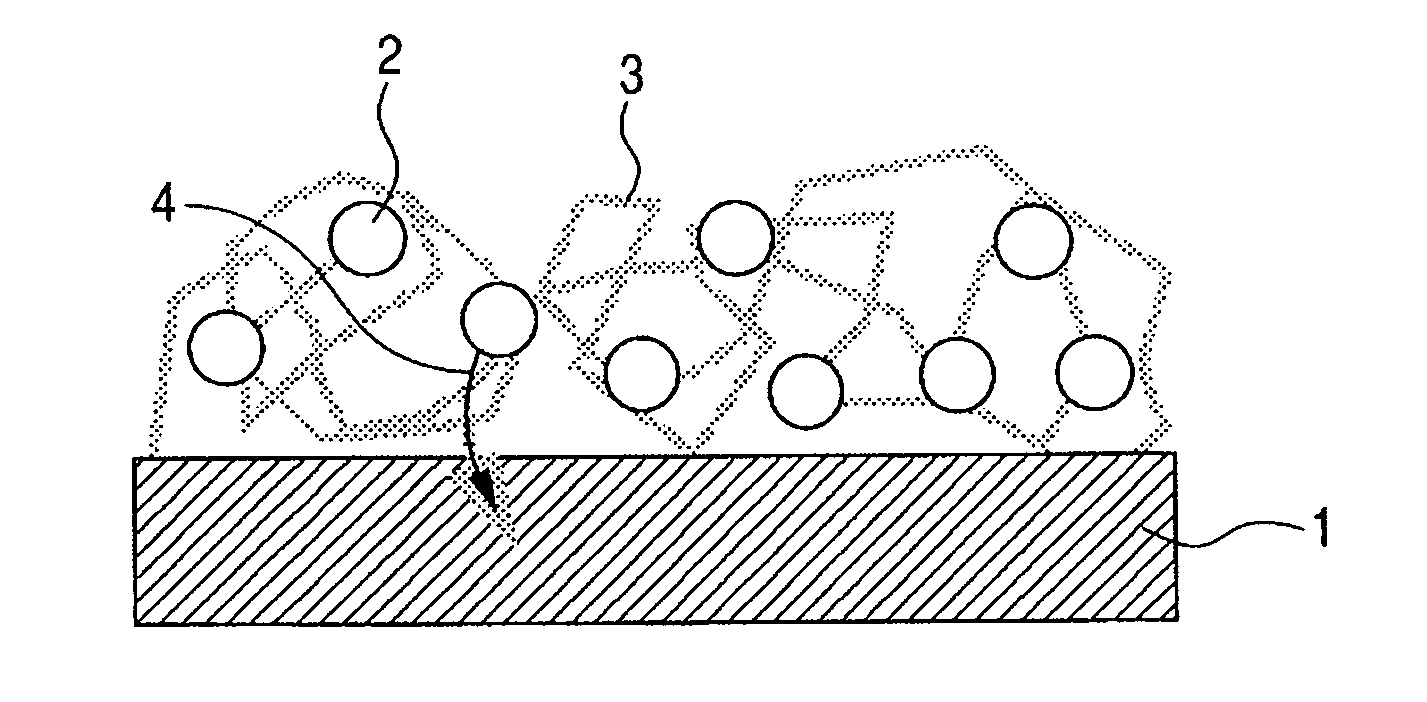Enzyme Electrode, and Device, Sensor, Fuel Cell and Electrochemical Reactor Employing the Enzyme Electrode
a technology of enzyme electrodes and electrodes, applied in the field of enzyme electrodes, can solve the problems of limited improvement of electric charge transfer efficiency and expansion of application fields, and achieve the effect of high enzyme immobilization density and without lowering electron transfer efficiency
- Summary
- Abstract
- Description
- Claims
- Application Information
AI Technical Summary
Benefits of technology
Problems solved by technology
Method used
Image
Examples
preparation example 1
[0061]A commercial polystyrene type latex colloid dispersion liquid (Nippon Zeon Co.; average particle size: 100 nm) is employed. The dispersion medium of the dispersion liquid is replaced by ethanol. A cleaned gold substrate is allowed to stand in the dispersion liquid. The ethanol is allowed to evaporate at 30° C. to obtain a porous film constituted of polystyrene spheres. This process is repeated several times to obtain a porous film constituted of polystyrene spheres of an intended film thickness (100 μm thick). The film is heated at 70° C. for 30 minutes, and then washed with ethanol. Using this porous film as the working electrode and a platinum electrode as the counter electrode, electro-deposition is conducted in an aqueous 0.1M nickel sulfate solution at a current density of 0.1 mA / cm2 by control with a galvanostat. The time of the electro-deposition is controlled by monitoring the electrolysis current profile to obtain a film in a thickness nearly equivalent to the polysty...
preparation example 2
[0062]A platinum paste (Tanaka Kikinzoku Kogyo K.K.; platinum particle size: 1 μm) is applied on a cleaned gold substrate by screen process printing, and is sintered at 500° C. for one hour to obtain a conductive member (100 μm thick) constituted of platinum having numerous voids.
preparation example 3
[0063]A gold paste (Tanaka Kikinzoku Kogyo K.K.; gold particle size: 1 μm) is applied on a cleaned gold substrate by screen process printing, and is sintered at 500° C. for one hour to obtain a conductive member (100 μm thick) constituted of gold having numerous voids.
PUM
| Property | Measurement | Unit |
|---|---|---|
| Molar density | aaaaa | aaaaa |
| Molar density | aaaaa | aaaaa |
| Molar density | aaaaa | aaaaa |
Abstract
Description
Claims
Application Information
 Login to View More
Login to View More - R&D
- Intellectual Property
- Life Sciences
- Materials
- Tech Scout
- Unparalleled Data Quality
- Higher Quality Content
- 60% Fewer Hallucinations
Browse by: Latest US Patents, China's latest patents, Technical Efficacy Thesaurus, Application Domain, Technology Topic, Popular Technical Reports.
© 2025 PatSnap. All rights reserved.Legal|Privacy policy|Modern Slavery Act Transparency Statement|Sitemap|About US| Contact US: help@patsnap.com



